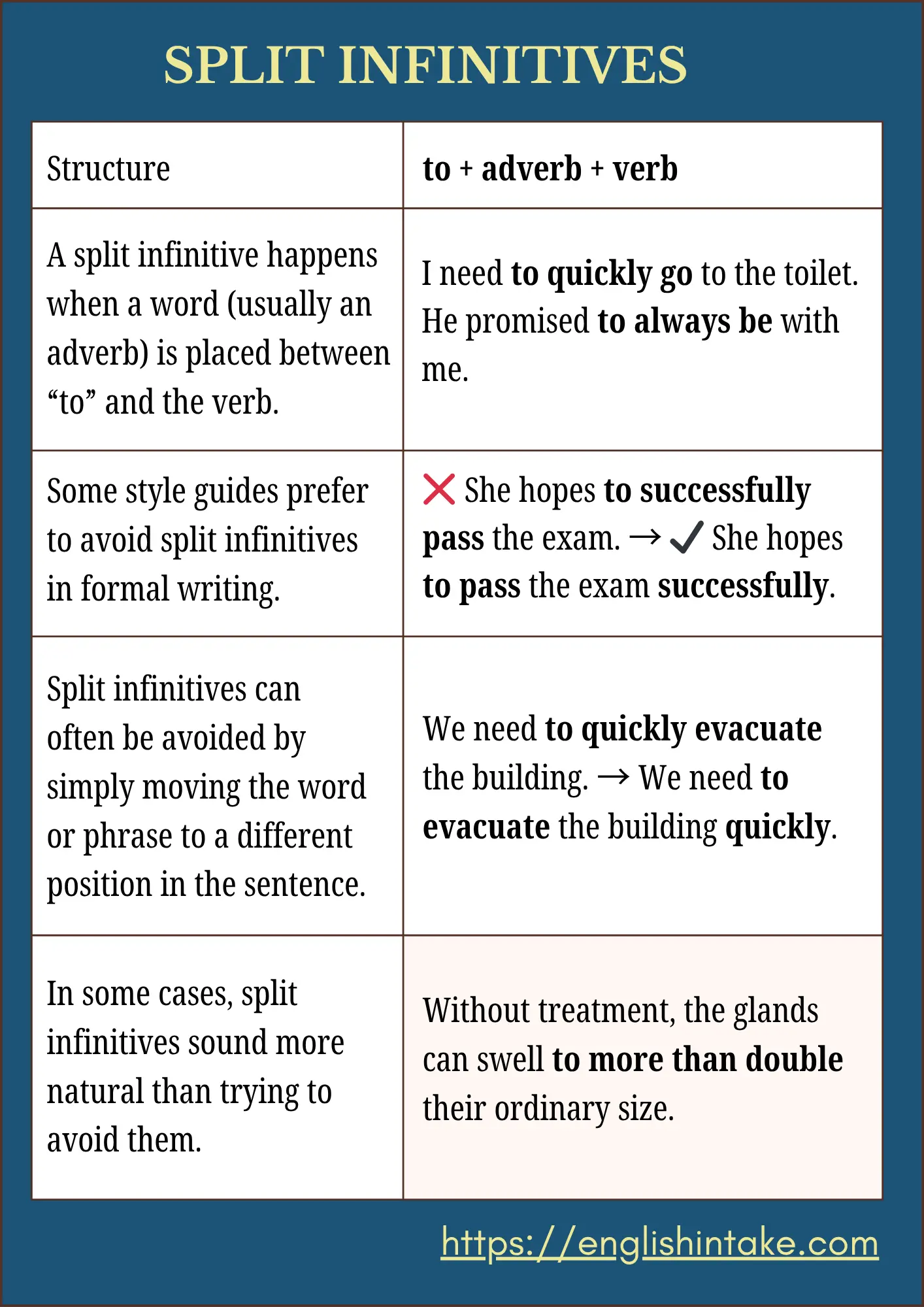1. What is a split infinitive?
A split infinitive occurs when an adverb or adverbial phrase is placed between to and its base verb.
- Structure: to + [adverb] + [verb].
- Example: "to quickly run".
- Normal sentence: She decided to quit her job instantly.
- Sentence with a split infinitive: She decided to instantly quit her job.

2. History of split infinitives
2.1 The first known split infinitive
In Old English (before the 12th century), infinitives were single words, such as "go" (gān), so splitting them was impossible. By the Middle English period (12th–15th centuries), the word "to" began appearing before verbs to form infinitives (e.g., "to go"). The first known split infinitive appeared in the 13th-century text Layamon’s Brut, where a pronoun split "to" and the verb. Writers like John Wycliffe in the 14th century also used split infinitives, though they remained rare until later.
2.2 Controversy in the 19th century
The split infinitive became controversial in the 1800s. Some grammarians argued that splitting "to" and the verb with an adverb (e.g., "to quickly run") was incorrect. They claimed it was "ugly" or "unnatural," possibly influenced by Latin, where infinitives are single words and cannot be split. However, this reasoning is debated, as Latin grammar doesn’t directly apply to English.
Despite criticism, famous writers like Jane Austen, Benjamin Franklin, and William Wordsworth used split infinitives. The phrase “to boldly go” from Star Trek (1960s) became a famous example, showing its acceptance in spoken English.
2.3 Modern usage of split infinitives
Today, most grammar experts agree that split infinitives are acceptable in modern English. They often improve clarity or rhythm. Sometimes splitting is necessary. For example, “We aim to more than double our profits this year” can’t be rephrased without losing clarity. Guides like The Chicago Manual of Style and Merriam-Webster now support split infinitives when they make sentences easier to understand.
